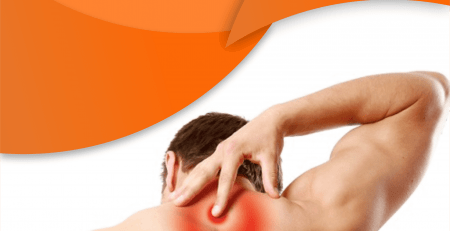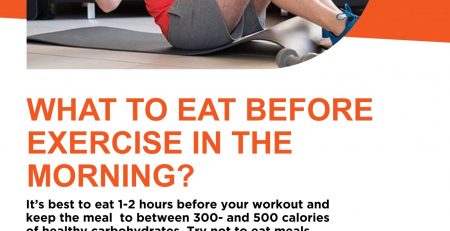What Is Cardiovascular Fitness? Why Is It Important And How to Improve
We’re all familiar with routine vital signs at the doctor’s office. For example, blood pressure? What about pulse rate? But did you notice that your cardiovascular fitness is as essential as your overall health?
Cardiovascular endurance refers to the ability to do exercises that involve your whole body at moderate to high intensities for extended periods. Exercise can help you increase your cardiovascular endurance, making it easier to accomplish your daily tasks. Additionally, it can reduce your risk of diseases like diabetes, heart disease, and stroke. (1)
In this blog, I’ll explore all the aspects of cardio, such as cardiovascular fitness, why it is essential, health risks, and many more. Let’s understand it.
What Is Cardiovascular Fitness?
Cardiovascular fitness refers to the capacity of your heart to deliver oxygen to your muscles, as well as the ability of your muscles to utilize oxygen for sustained periods of physical activity. When your cardiovascular health is good, you can accomplish your daily tasks more efficiently and have more energy to engage in other physical activities. (2)
When participating in physical activity, someone with low cardiovascular fitness will tire quickly and experience muscle soreness. When exercising at a moderate intensity, a person who has good cardiovascular fitness is less likely to tire quickly and suffer from muscle soreness.
Cardiovascular Fitness: Why Is It Important and How Can You Improve It?
Whether you’re awake or asleep, your heart is hard at work pimping. On average, the heart pumps over 100000 times per day. During every pump, a new surge of blood travels down a network of vessels 60000 miles long. Your body’s superhighway. (3)
Along its way, the blood picks up oxygen from your lungs, and off it goes to nourish your liver, kidneys, brain, and more. Unfortunately, these days, too much eating and not enough exercise stress out the heart. It all starts with your blood vessels.
It is easy for blood to flow through them when they are healthy and clear. Blood gets stuck like a traffic jam when they’re clogged. You have to pump harder and harder to get it out.
Why is there so much congestion?
Well, it’s usually high-fat and high-cholesterol foods such as burgers, fries, pizza, and donuts. Atherosclerosis occurs when plaque, a sticky substance formed by fat and cholesterol, builds up in your arteries and causes your blood vessels to narrow and rigid.
In addition to high blood pressure, this backup causes other problems. If you gain weight, sit too much, or smoke too much, atherosclerosis goes into overdrive, which is bad for your blood vessels and heart. In other words, your heart has to work harder and harder to pump the same amount of blood.
Eventually, as you push and pump harder and harder, your heart will get tired, and you’ll produce less oxygen-rich blood, putting your organs at risk.
Why is the blood flowing so slowly? It appears that a clot has formed in the pooled blood, and it is moving. The clot could get stuck in a blood vessel feeding the heart and cut off the blood supply.
It’s possible for part of the heart muscle to die without oxygen, and that’s a heart attack. When a clot enters a blood vessel in the brain, if it gets stuck in a blood vessel there, robs the brain tissue of oxygen it needs to think, walk, talk, and do just about everything else, and that’s called a stroke.
There is no doubt that these stories are scary, but you can prevent them. Here’s how you do that:
- Make sure you get moving by walking, riding a bike, or taking dance classes.
- Get your heart pumping by completing aerobic exercise five days a week for at least 30 minutes.
- Physical activity helps you lose weight, and it improves your heart’s performance.
- Put down the cigarettes. When you puff on a cigarette, you inhale a cloud of toxic chemicals.
- Those toxins wind their way into your blood, damaging your heart and its delicate vessels. Once you stop smoking, the clouds clear.
- Make your plate with colorful fruits and vegetables, orange, red, and yellow; they’re full of heart-healthy nutrients.
- Keep your distance from the high-calorie, high-sugar, high-salt, and high-calorie processed foods that are on the shelves and that weigh you down.
- Your heart is put under strain if you have to count too high.
- You should keep your weight in a healthy range for your height, and learn what the numbers mean. Monitor your blood sugar, blood cholesterol, and blood pressure.
- Ask your doctor how to reduce your blood pressure if it’s too high.
What Are the Major Categories of Cardiovascular Exercises?
Cardiovascular exercises that I can classify into three following categories:
- High-impact cardio
- Low-impact cardio
- No-impact cardio
High Impact Cardio
High-impact cardio is any activity that involves lifting your feet off the ground during part of the exercise. As a result, this exercise is also called a weight-bearing practice since your limbs help you to support your body against gravity.
Examples
Here are some examples of high-impact cardio. Take an eye!
- Jumping rope
- High-impact aerobic dance
- Strength Training
Low Impact Cardio
A cardiovascular activity that demands that one foot remains on the ground at all times. Although many low-impact activities are high intensity, low-impact cardio should not be confused with low-intensity cardio. Exercises that are low impact are still weight-bearing exercises and are beneficial for maintaining strong bones and conditioning the heart and lungs.
Examples
Following are a few examples of low-impact cardio exercises:
- Hiking
- Walking
- Low-impact aerobic dance
No Impact Cardio
Because water immersion decreases the pull of gravity on the body, cardiovascular activities performed in water do not affect the body. These activities include swimming and water aerobics.
In addition to being a no-impact cardio exercise, bicycling is also a no-impact exercise because the tires and frame support most of the body’s weight. Cycling and aquatic exercise are great for people with arthritis or those recovering from an injury. They don’t involve the pounding and jarring of land-based cardio.
Examples
Examples of no impact cardio exercises are as follows:
- Swimming
- Water aerobics
- Bicycling
- Aquatic exercise
FAQs
What health risk might it imply if cardiovascular fitness is poor?
Less active people and less fit have a greater risk of developing high blood pressure. Lack of physical activity seems to be a significant risk factor for cardiovascular disease and other conditions. Participating in physical activity can reduce your risk for type 2 diabetes.
What health risk might it imply if cardiovascular fitness is good?
You can lessen your risk of developing heart disease by improving the efficiency of your heart, lungs, and blood vessels by improving your cardiovascular fitness. It takes little effort for your heart to pump blood through your body when it is easier to do so.
What is the best way to measure cardiovascular fitness?
You can determine your cardiovascular fitness with treadmill tests. While monitoring heartbeats and blood pressure, the graded exercise test consists of long intervals on the treadmill. A professional usually administer these in a gym or a lab, which can involve working up to very high intensity.
What kind of exercise is best for improving cardiovascular fitness?
An individual should engage in moderate-intensity aerobic exercise three to four times a week for approximately 30 minutes to improve and maintain cardiorespiratory fitness. There are many aerobic exercises that you can do, including walking, running, swimming, biking, and aerobics.
What is the minimum number of days a person would exercise to improve cardiovascular fitness?
Exercises involving oxygen provide cardiovascular conditioning. An American Heart Association recommendation is to exercise for at least 30 minutes for 5 to 7 days each week.
Wind Up
Although cardiovascular exercise is beneficial and healthful, it does come with risks. You should consult your health care provider before beginning any new workout routine if you are severely overweight, sedentary, suffering from an illness such as cardiovascular disease or metabolic disease, or if you have joint pain.











